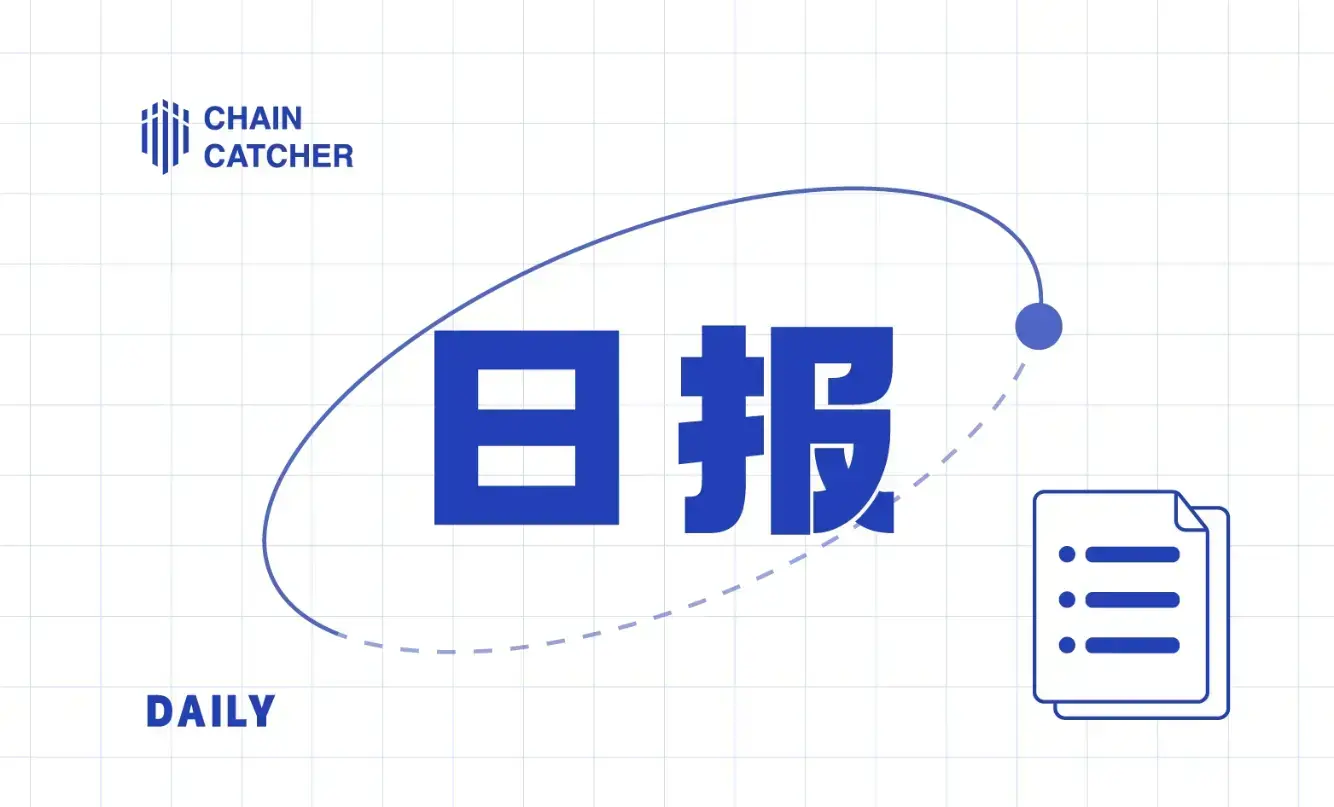Transcript of Vitalik's Speech at Nanyang Technological University: The Past and Present of Ethereum
Original Author: DeThings
Original Compiler: fanfan
Note: This article is a keynote speech delivered by Ethereum co-founder Vitalik Buterin at Nanyang Technological University in Singapore on September 6. Unlike his speech on September 5 at KBW (Korea Blockchain Week), which focused on "the challenges and solutions facing Ethereum," Vitalik's speech this time is more macro, titled "The Past and Present of Ethereum." He talked about the birth of Ethereum, from the vision of "smart contracts" to their implementation, and the transformation of Ethereum's "consensus mechanism." These milestones, destined to be recorded in the annals of blockchain history, were shared eloquently by him. Known as "V God" in the Chinese blockchain community, he seems to always be dressed in T-shirts, shorts, and sneakers. The nascent crypto world has gone through several cycles, with countless people rising and falling, but this wayfarer has never stopped.
Here is the full text of the speech:
The Birth of Ethereum
Today I plan to review the history of Ethereum, starting from its inception in 2013 and 2014, as well as some changes the project has undergone since then, and how our thinking on certain issues has evolved compared to 5 or 10 years ago.
In 2014, we released the Ethereum white paper, which essentially described our initial vision for Ethereum. However, the white paper did not elaborate on some of the fundamental ideas behind the theories. Ethereum is a decentralized system, similar to Bitcoin. It is a blockchain, but unlike previous systems that attempted to support only one application, Ethereum allows users to build their own applications. This means users can write their own application code, upload it to the blockchain, and then that application can run on the blockchain.
At the beginning of the white paper, I mentioned some ideas proposed by others, as well as one of the ideas I began to think about, which is issuing one's own assets on top of Bitcoin. Today, we have ERC-20 tokens on Ethereum, but back then we had Colored Coins, which were early attempts to issue one's own assets on Bitcoin. Interestingly, a specific version of Colored Coins has recently been introduced into the Bitcoin protocol, so Colored Coins seem to be gaining renewed attention, but Colored Coins are just an application. You could use it to represent ownership of physical items, which was then referred to as smart property. You could also have other types of assets, such as domain names, and you could build a system on the blockchain for registering websites, usernames, tracking user and application comments, and other names.
The Vision of "Smart Contracts" to Implementation
You can implement all of this in a distributed manner on the blockchain. The concept of smart contracts is that you can have computer programs on the blockchain that can directly control digital assets; an asset does not have to be owned by an individual; it can be owned by a program. This concept of smart contracts can be used to implement many more complex applications. For example, you could have prediction markets, financial instruments, such as stablecoins and leverage, etc. All these different things can be defined through smart contracts. Additionally, there is the concept of DAOs, which essentially use smart contracts to implement the voting or governance logic of an entire organization on the blockchain, without relying on the legal system to resolve internal disputes, allowing you to vote directly at a very low cost.
Thus, many of these concepts in the application space have persisted to this day and continue to evolve. We previously had Colored Coins, and now we have ERC-20 tokens. We previously had smart property, and although not much progress was made, we have the ENS (Ethereum Name Service) that many people are using, such as my blog, which has been uploaded and may be accessible via ENS. If you use a browser that supports Ethereum, like the Brave browser, you can access the front-end page of my blog just by entering eth.link.
These are tools that can be used, involving smart contracts and DAOs. Various types of DAOs around the world are using various different logics. Although so far they have not really been adopted on a large scale outside the ecosystem, they do exist, and some have been operating for years. These are some of the applications we see today. Clearly, other applications are emerging, some of which surprise me. For example, NFTs (non-fungible tokens) are one such example. But many other things that exist today are basically very similar to our ideas from 10 years ago. The study of consensus mechanisms is the same. Today, Ethereum has ultimately become a consensus mechanism chain. The consensus mechanism has greatly improved security and reduced Ethereum's energy consumption by over 99.9%. Previously referred to as "the merge," before that, Ethereum's energy consumption was almost equivalent to 40% of Singapore's, and now it has been reduced to almost zero. Thus, the state transition has finally been completed, but this is the result of nearly 10 years of work in the ecosystem. The first five years of state proof were essentially research, as we tried to understand the nature of state proof and various options for different state spaces, ultimately converging on a specific version that is practically effective.
The Transformation of the "Consensus Mechanism"
In a blog post in 2015, we described a mechanism called "consensus mechanism," which attempted to encourage validators to send a series of messages expressing confidence in a specific block height to achieve consensus more effectively. Later, we found that our consensus mechanism had many issues; it was too complex and was actually not as simple and effective as the Casper protocol that evolved later. But this was a step we took as we gained a deeper understanding of the field.
In fact, in 2018, I published a series of tweets reviewing the progress of Ethereum's state research, and how we gradually shifted from initial exploration to state chains, ultimately determining the exact algorithm.
First came the research, and then the next four years focused on scalability. Scalability is crucial for Ethereum because, to date, Ethereum can only process 10 to 20 transactions per second. In reality, this depends on the complexity and size of the transactions, which could be between 10 and 50. Now, this level of scalability is very limited; to support mainstream finance, mainstream payments, and global systems, we need to process about 100,000 transactions per second. If we can only process 20 transactions per second, then a population of one million would take 4 million seconds, about 13 years, to execute a transaction on Ethereum. Therefore, improving scalability is very important.
Early attempts to improve scalability were referred to as "sharding," and what we are doing now is still a form of sharding, but since then, many different things have been designed and modified into this mechanism. The basic idea is that traditional blockchains, like Bitcoin, require every computer in the network to process every transaction, thus limiting scalability.
We changed this design. Not every node processes every transaction; instead, each node only processes a small portion of transactions. This works similarly to how BitTorrent operates, where BitTorrent works by breaking data into small pieces and allowing people to share it, so that while there is a lot of popular data, not everyone needs to store the entire file. Because for people, that would be too much data. So the challenge is how to maintain some form of historical record while still having a consensus system that allows people to agree on the order of things arriving, so that financial systems and others can be built on top of it. This is a technical challenge. This was one of our early concepts of sharding, where you basically divide transactions into different groups, each with its own nodes, independently processing transactions. This is a very complex idea. Since then, we have had to work very hard to reduce complexity. Essentially, we had to strive to make things very simple because we know that spending 2 months or 2 weeks writing specifications can take 2 years to develop. If it takes 6 weeks to write specifications, then it may take 6 years to develop. We had to work very hard to reduce complexity, make many sacrifices, and ultimately we approached the structure we have today.
Technical Progress and Challenges of Ethereum
Interestingly, one point about the technical progress of Ethereum is that the things we talk about today are very similar to what we talked about 6 years ago. This is a slide from an Ethereum conference, where I think I described some of the main issues facing Ethereum at that time, such as privacy, consensus, smart contract security, and scalability. If you ask me or others what the biggest issues facing Ethereum are, you would get basically the same answer: privacy, consensus, smart contract security, and scalability.

These challenges are the same today as they were 6 years ago, but at the same time, I think it is interesting to note some progress made since 2017. For example, in 2017, privacy was just a technical challenge, and there was basically a new type of cryptography called zero-knowledge proofs, or zk-SNARKs. This allows you to create cryptographic proofs that demonstrate certain mathematical properties, such as the data you own, without revealing any other information about that data. This was first used by Z.cash, a privacy-preserving cryptocurrency launched in 2016 that used zk-SNARKs to achieve privacy. How did it do this? Essentially, when you spend a coin in Z.cash, you do not directly point to the coin you are spending; instead, you need a proof that you are spending an unspent coin without revealing any other information about that coin. You prove the necessary statements to ensure a currency system that does not overinflate, while keeping all other information private.
Back in 2017, the challenge was simply to bring this technology to Ethereum and make zk-SNARKs work. These technologies are based on a complex mathematical theory called elliptic curve cryptography. Regarding the use of this technology, we basically added a layer called "zero-knowledge statements," which is a code that allows you to use zk-SNARKs on the blockchain. Thus, using smart contracts, you can actually build applications on Ethereum that have the same privacy protection logic. This was the situation in 2017. By 2023, the technological state has advanced significantly, with very advanced zk-SNARKs libraries, development environments, tools, and protocols. We have a long list that includes very interesting technologies like StarK, ZK Rollup, Cairo, and so on. In fact, privacy may become another bottleneck, mainly due to legal issues and questions about whether the tokens generated by these systems are accepted by the broader financial system. For example, Tornado Cash has legal issues and can be seen as a privacy token on Ethereum because hackers used it.
Thus, a concept called "proof of innocence" has emerged, which aims to allow you to prove that your tokens were transferred through a privacy system but did not come from one of the hackers. You prove that you are not one of the hackers without fully disclosing where the tokens came from. In fact, a paper on this idea will be published soon. Several companies have proposed different solutions. Therefore, a lot of work needs to be done to modify the details to increase the likelihood that users of privacy systems will have their tokens accepted by exchanges without raising significant suspicion.
Additionally, there is work being done on the verification and validation of zk-SNARKs to reduce the cost of verifying proofs. The goal is to make the cost of verifying proofs lower. Part of the reason is zk-Rollup, and part is aggregation protocols. The difference between 2017 and 2023 is that in 2017 we were just trying to get the basic building blocks to work, while by 2023, these building blocks are working, but our focus is on optimizing these building blocks and doing some more complex work to better integrate them with the mainstream world. In terms of consensus security, in 2017, we were basically just completing the research phase of the consensus mechanism development process and had just begun development. By 2023, Ethereum has fully switched to a consensus mechanism and has become a complete consensus mechanism. But challenges still include reducing the complexity of the protocol, improving the security of the protocol, addressing centralization issues, making it easier for people to participate, and making a concept called PDS easier to participate in, as it does not require running complex algorithms to optimize yields.
In terms of smart contract security, addressing smart contract security issues may be the slowest progress among these four issues because in 2017, it was only a year after the DAO hack incident, when the DAO was a smart contract controlling about $150 million in an investment fund. It was then hacked. In fact, the hacker tried to escape, but ultimately the Ethereum community collaborated to return the money to the original owners of the DAO.
That was the only time such an incident occurred in Ethereum, so in 2017, this incident was still fresh in everyone's memory. People were very concerned about this security, so everyone was working hard to improve the security of programming languages to make projects safer. By 2023, much of this work has been successful. I believe the frequency of hacks has significantly decreased. When attacks occur, it is usually because people are trying to build more complex projects, with complexity increasing 20 times compared to projects in 2016. If the project you are building now is not 20 times more complex than in 2016, it is generally quite safe. Many systems have not been attacked over the years, which is a very impressive achievement. There have also been other improvements in security.
In the months following the DAO incident, there was an event called the "Shanghai DOS attack," where attackers exploited many vulnerabilities in the Ethereum protocol itself to send transactions, thereby slowing down the entire blockchain. We spent months basically releasing updates every day. I knew hackers were finding new vulnerabilities every day, so we were constantly fighting and discovering small issues. After 4 years of effort, through a series of different changes and improvements, these security issues were ultimately fixed. EIP 2929 also brought many improvements to the DeFi codebase. Gas optimizers have also done some amazing work. In summary, many security issues have actually been resolved very quietly.
When you switch from proof of work to proof of stake, a significant event called "the merge" occurs. And in terms of security, there was no significant event because the entire focus was on having no events. But sometimes it is important to remember that the absence of events is good news. Therefore, I believe substantial improvements have indeed been made in this regard, but many ongoing issues still exist.
So going back to 2017, sharding was just an idea. At that time, we were also discussing state channels and adders extensively, which were all large legal solutions. Then around 2020, everyone turned to Rollups. Today, there are various types of Rollups, including ZK-Rollup, Optimistic Rollup, and so on. These Rollups are beginning to shed their training wheels and have taken significant steps toward becoming truly decentralized. This year, Polygon has also made a big leap. This year, we are continuing to work to decentralize these systems, enhance the security of proof systems, and make proof systems faster, so that a block that currently takes 5 hours to prove may be reduced to 2 minutes in the future, and possibly eventually to 12 seconds.
While we have made a lot of progress, problems still exist, but we have made tremendous progress on every issue. There are also many other aspects of work, such as Verkle trees. Five or six years ago, stateless clients were just an idea. Now, state trees have become a project with hundreds of people on the team, writing thousands of lines of code, deeply considering how to apply it to Ethereum. It may only take 1 to 2 years to truly realize. There are also improvements to the EVM, maximizing and simplifying the EVM. Account abstraction is a very important direction, and everyone who supports account abstraction has their own reasons. I support account abstraction because it is essentially a very flexible thing. The goal of account abstraction is to say that instead of having accounts controlled by keys, it is better to have accounts controlled by computer programs. If you have accounts controlled by computer programs, users can devise different logic for approving these transactions. You can have not just one key, but three different keys, some of which are controlled by others. You can implement multi-factor authentication. You can store keys in trusted hardware modules that exist on modern smartphones, use hardware wallets, or even combine multiple hardware wallets. You can use very complex ways to authenticate, such as email accounts, and even use email accounts as a way to authenticate Ethereum addresses.
Back to Reality and Practical Applications

Back to the realm of reality and practical applications, one event I often mention is my experience traveling to Argentina around 2021, where I was impressed by how many locals were using Ethereum; they were really using cryptocurrency. I remember on Christmas Day, most places were closed, so I just wanted to find a coffee shop. The first coffee shop I found, the owner recognized me, and he told me he had encrypted a wallet, so I asked him if I could pay with Ethereum, and he said yes, so we paid with Ethereum. But there was a problem; he was not using the Ethereum mainnet but rather Polygon. I appreciate the work DeFi has done because it has made cryptocurrency more accessible to those without a banking system; without DeFi, they would have no other options, and I think providing these alternatives is good.
But at the same time, I think as an ecosystem, the goal is to gradually reduce more and more single points of failure in the future. I think even the Ethereum Foundation agrees with this. They have been becoming increasingly decentralized. We are working to address this issue, but the problem is that such decentralized ways do not actually exist for people like that coffee shop owner. Although it is technically possible to achieve more decentralization, the decentralized methods do not actually exist for these holders. Therefore, truly improving and making things better is a very significant challenge for these on-chain individuals.
So basically, I do not know if we can enable these holders to actually use the chain, benefit from it, enjoy the advantages of decentralization and global permissionlessness, and whether we can realize a world where people can truly benefit from all the application areas we have been thinking about since 2013. Can we turn these concepts into truly beneficial applications that help people?
These technological works have been following a fairly consistent direction, which I find interesting. The tools have changed, and 10 years ago we weren't even considering these issues, but now we are. But the rules are the same. But now I think there needs to be more focus on actual adoption and usage. The solutions involve technical work but are more decentralized and distributed across different layers. This means that the Ethereum Foundation, the Ethereum core development team, and client teams are no longer the only places doing extremely important work; wallet companies are also doing extremely important work, application developers are also doing extremely important work, and even building enterprise blockchains is also part of this. This is something people have been trying to do for years. But I think if you view it as a layer 3 on top of Ethereum, it is actually possible to make it feasible, providing decentralized benefits to those who want to use it and making it truly viable.
These are some of the biggest changes we have seen over the past 10 years. From an initial concept to a gradual process of addressing various challenges in practical use, it has been a long and slow journey. I hope that in the next 5 years, we will be able to resolve most of these challenges.












